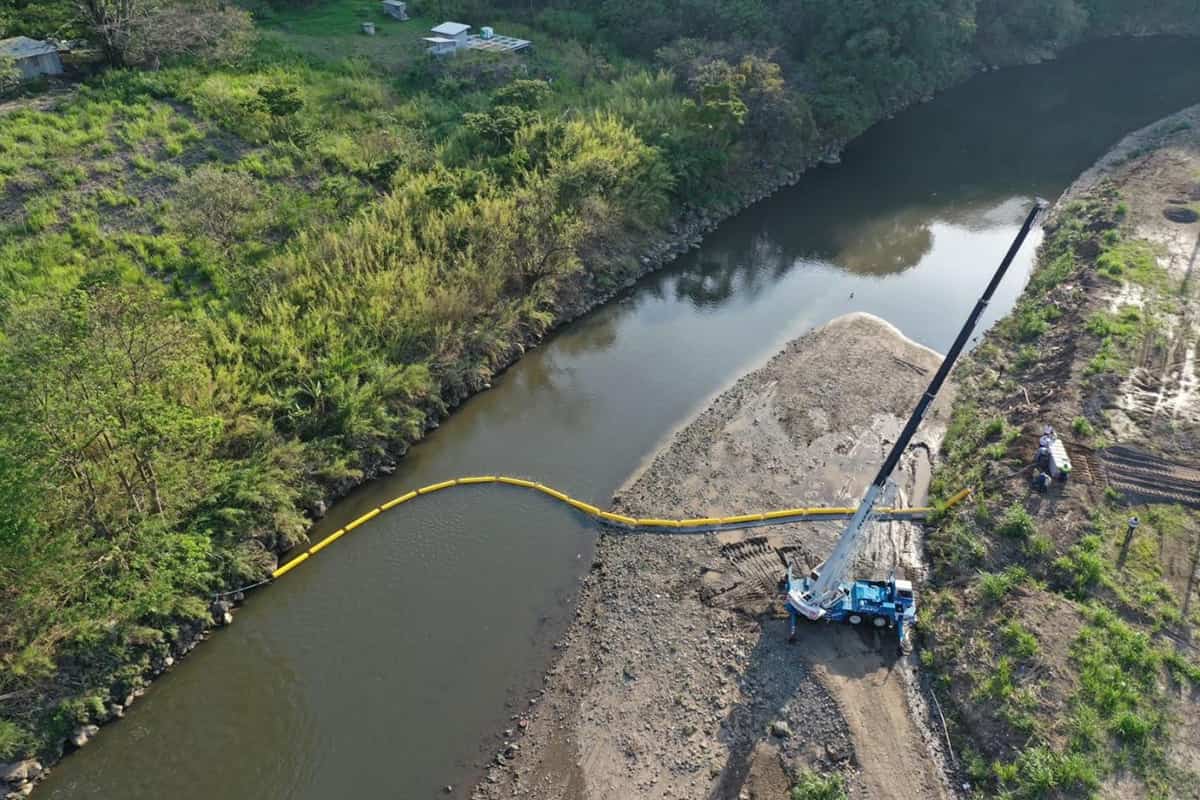This Tuesday, the first floating solid waste collection barrier was inaugurated in Costa Rica. The infrastructure is in the basin of the Virilla River and can capture floating solid waste, including plastics.
The Virilla river is one of the most contaminated rivers in Costa Rica. Its riverbed collects the waters of the María Aguilar and Torres rivers, which receive polluted waters from urban areas in the western sector of the Central Valley. Then, it flows into the Grande de Tárcoles river.
It’s the most polluted river in the Greater Metropolitan Area (GAM) and one of the most polluted in the country, and it will be cleaned thanks to an innovative cleaning technology consisting of a floating solid waste collection fence to prevent the dumping of large quantities of non-valuable plastics and other waste on the Pacific coast.
This innovative project is the result of a joint effort of the Plastic-Free Landscapes project, implemented by UNDP, Televisora de Costa Rica, the CRDC-PEDREGAL consortium, OneSea Foundation, and Delfino, with the support of the Organization for Tropical Studies (OTS) and the Transition to a Green Urban Economy (TEVU) project.
As revealed by the organizers, it costs approximately $68,000 and consists of floating units made of linear, low-density polyethylene with high resistance to impact and inclement weather. It has a submerged galvanized iron mesh and a mooring and anchoring system, which allows the barrier to be attached to both sides of the river.
The installation of this system is part of a worldwide effort to combat the severe pollution caused by plastic waste, which impacts the environment, biodiversity, and the health of the population.
This technology allows similar barriers to be placed in any contaminated body of water where intervention is needed.
In addition, the structure uses the river current to direct the floating debris to either bank, where it can be collected. The nets are submerged up to 60 centimeters and are spaced to allow fish and other species to pass through.
“This barrier allows us to capture about 80% of the plastics that leave the Central Valley for the Pacific coast. And thanks to the RESIN8TM technology we have developed, we can transform these plastics into raw materials for construction, significantly reducing plastic pollution of rivers, beaches, and the Pacific Ocean. This is a powerful example of circular economy in action, positively impacting our environment.” Said David Zamora, Commercial Director of Pedregal.
The organizations hope to install similar waste capture systems in different rivers that require intervention. They also invited organizations, local governments, and the population to support this initiative and end plastic waste.
“We are happy to support the country with installing this barrier, but we must not let our guard down. This is a response mechanism to the excess of plastics in the environment, but we need both response and prevention mechanisms. We must maintain the country’s efforts for a significant decrease in the use and consumption of plastic materials, promoting proper solid waste management and circular economy logic,” noted Kifah Sasa Marín, UNDP Deputy Representative.

